Streamline Customer Support with Smart Automation Tools

Automation is transforming customer support, making it faster and more efficient. Businesses see remarkable benefits when they automate customer support, such as a 37% reduction in first response time and a 52% decrease in resolution time. These improvements not only save time but also elevate customer satisfaction. For example, tools like Sobot’s Chatbot work tirelessly 24/7, handling frequent queries and freeing your team to focus on more complex issues. While automation enhances service, maintaining a human touch ensures customers feel valued. Striking this balance creates a seamless and satisfying experience for everyone.
Understanding Customer Support Automation
What Is Customer Support Automation?
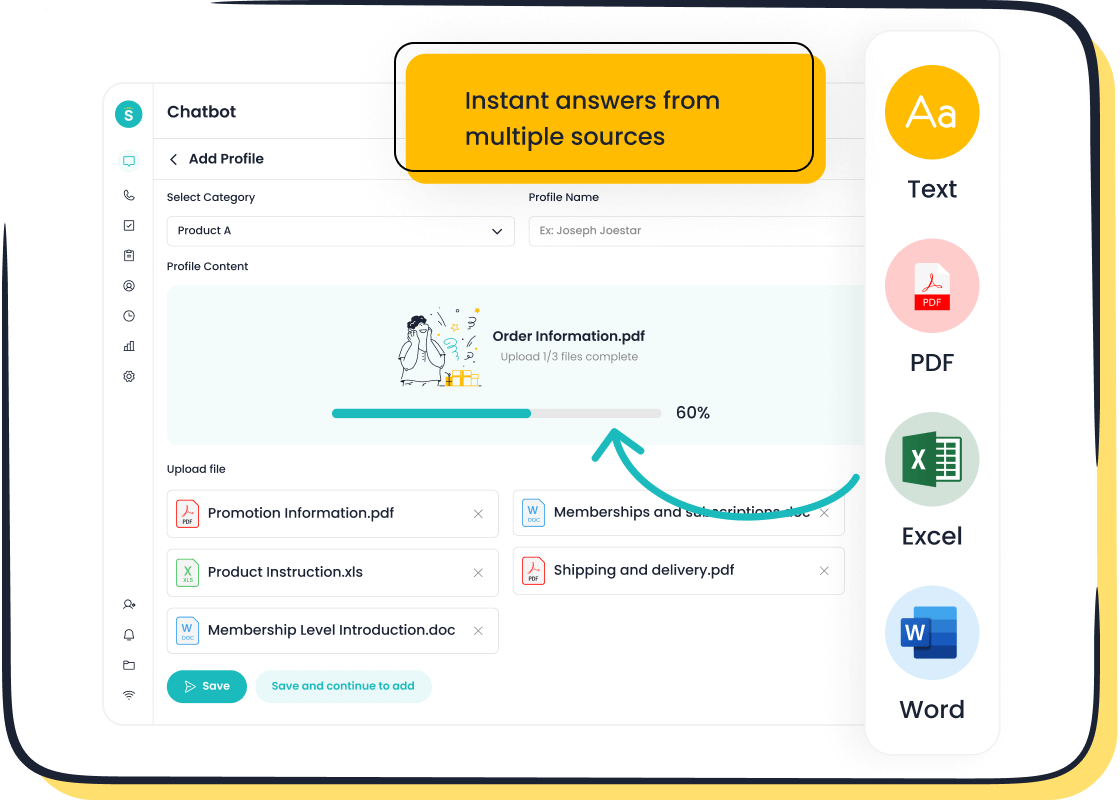
Customer support automation uses technology to handle routine tasks and interactions without human intervention. It includes tools like chatbots, self-service portals, and predictive analytics. These tools streamline processes, reduce response times, and improve service quality. For example, AI chatbots can answer frequently asked questions instantly, allowing your team to focus on complex issues. Automation doesn’t replace human agents; it complements them by handling repetitive tasks efficiently.
Why Automate Customer Support in Modern Businesses?
Modern businesses face increasing customer expectations for fast and accurate service. Automating customer support helps you meet these demands while optimizing resources. Nearly 50% of client support units now use AI, and 52% of contact centers invest in conversational AI to improve efficiency. Automation reduces costs by up to 30% and saves teams 45% of their time. It also enhances metrics like First Contact Resolution (FCR) and Average Handle Time (AHT), ensuring better customer satisfaction. With AI, businesses can achieve a return of $3.5 for every $1 invested, making automation a smart choice for growth.
Common Automation Tools and Their Applications
Automation tools come in various forms, each designed to address specific needs:
- Communication Tools: Chatbots provide instant responses to FAQs, reducing wait times and improving resolution speed. For instance, Sephora’s virtual assistant facilitated over 332,000 conversations, boosting monthly revenue by $30,000.
- Operational Tools: Self-service portals empower customers to resolve issues independently, lowering operational costs. IKEA’s portal increased eCommerce revenue share from 7% to 31%, reducing strain on support teams.
- Omnichannel Tools: 24/7 support systems ensure availability across platforms, enhancing customer satisfaction. T-Mobile uses AI to streamline call transfers, equipping agents with detailed customer information.
- Analytical Tools: Predictive analytics identify potential issues before they escalate, improving service quality. These tools follow programmed guidelines to reduce errors and enhance consistency.
By adopting these tools, you can automate customer support effectively, saving time and resources while delivering exceptional service.
Benefits of Automating Customer Support
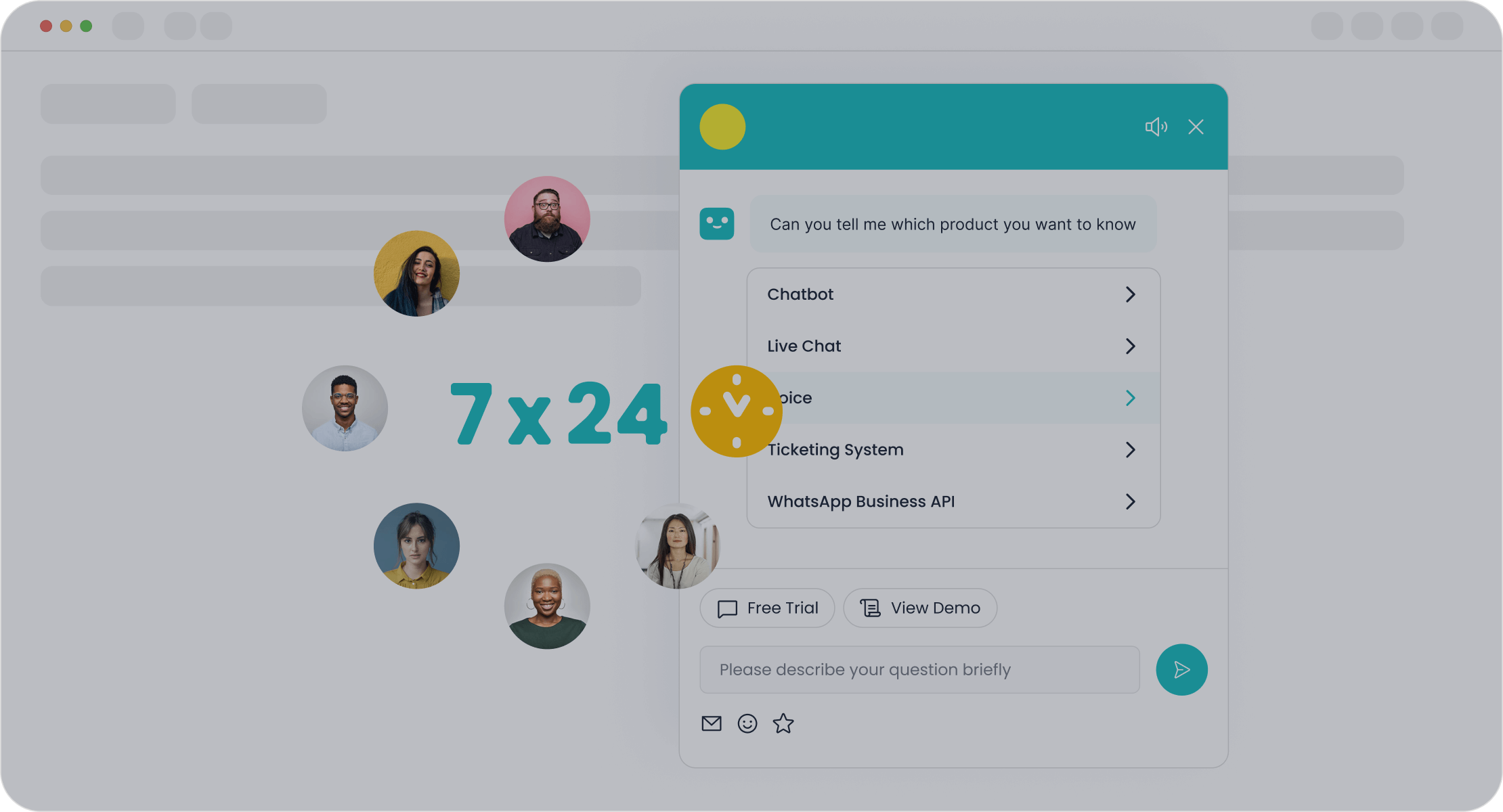
Faster Response Times and Improved Efficiency
Automating customer support allows you to respond to inquiries faster and more efficiently. Automation tools like AI chatbots can handle multiple queries simultaneously, reducing wait times and ensuring quick resolutions. For example, automated systems improve metrics like Average Response Time and First Contact Resolution Rate (FCR). These metrics reflect how quickly and effectively your team resolves customer issues, leading to higher satisfaction.
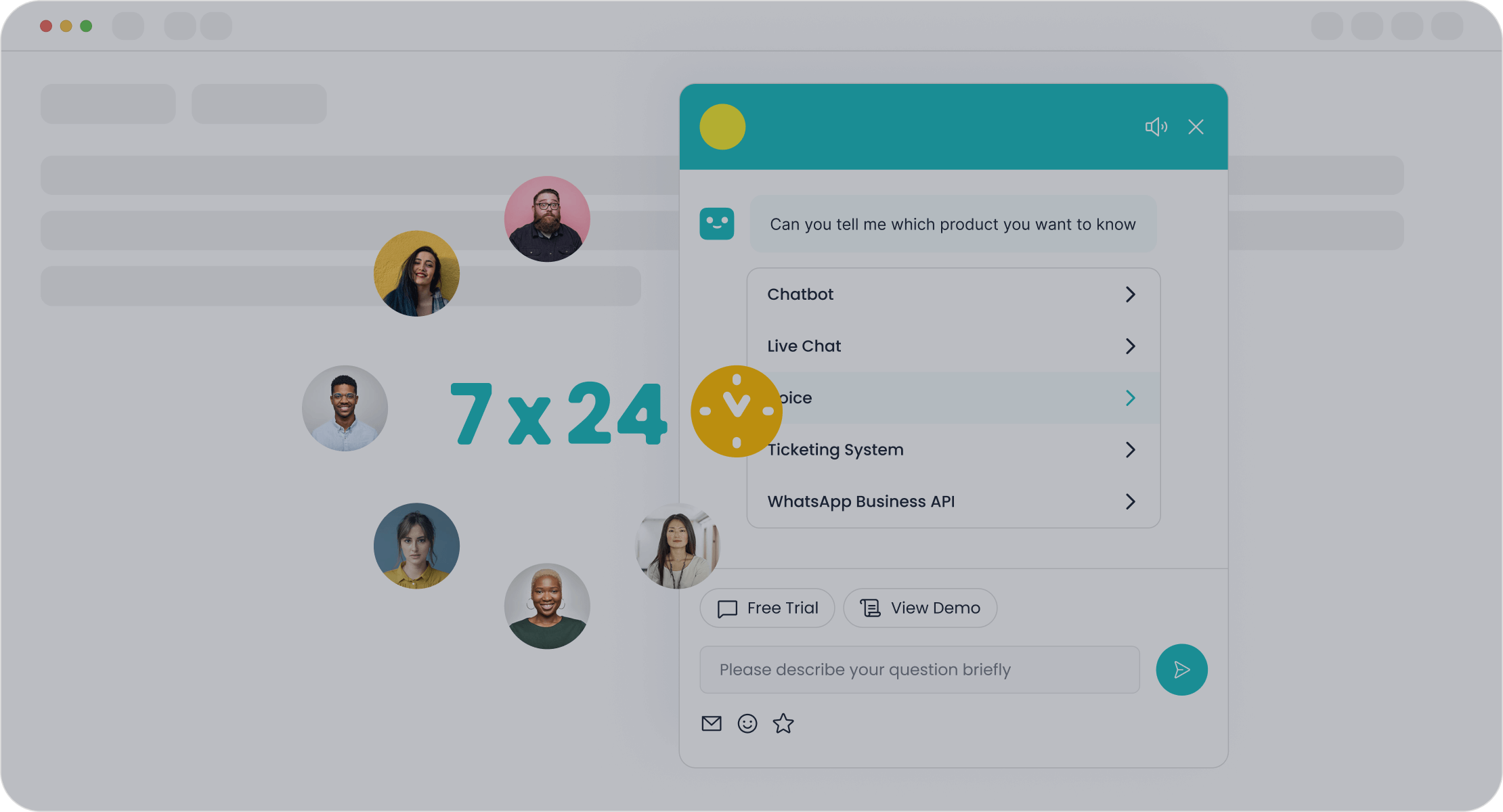
With automation, your team can focus on complex problems while routine tasks are handled seamlessly. This approach not only improves productivity but also ensures consistent service quality. Quick and accurate responses build trust and loyalty, helping you retain customers. By adopting tools like Sobot’s AI Chatbot, which operates 24/7, you can ensure that no customer query goes unanswered, even during peak hours.
Cost Savings and Resource Optimization
Automation significantly reduces operational costs by streamlining processes and minimizing the need for additional staff. Businesses that automate customer support report cost reductions ranging from 10% to 50%. For instance:
| Statistic Description | Cost Reduction Percentage |
|---|---|
| Automation can reduce costs by | 10–50% |
| 24% of businesses use job automation to cut operational expenses | N/A |
| Nearly 45% of businesses use automation like AI to cut costs | N/A |
| Two-thirds of respondents reported reduced operating costs due to automation | N/A |

By automating repetitive tasks, you can allocate resources more effectively. Tools like Sobot’s Chatbot triage queries autonomously, saving up to 50% on staffing costs. This optimization allows your team to focus on high-value activities, such as building customer relationships or solving intricate issues. The result? A leaner, more efficient operation that delivers exceptional service without breaking the bank.
Enhanced Customer Experience and Satisfaction
Automation enhances the customer experience by providing fast, accurate, and personalized support. Customers appreciate quick access to information and solutions, which automation tools deliver effortlessly. Metrics like Customer Satisfaction Score (CSAT) and Net Promoter Score (NPS) often improve after implementing automation. For example:
| Metric | Impact of Automation |
|---|---|
| Resolution Times | 52% faster complaint resolution |
| Customer Experience | Enhanced through quick access to information |
| Customer Satisfaction | Improved due to personalized responses |
When you automate customer support, you reduce frustrating handoffs and long wait times. Tools like Sobot’s omnichannel solution ensure seamless communication across platforms, allowing customers to interact through their preferred channels. This approach not only boosts satisfaction but also increases loyalty. By focusing on personalized interactions, automation helps you create meaningful connections with your customers, driving long-term success.
Scalability for Growing Businesses
As your business grows, so do the demands on your customer support team. Scaling operations without compromising service quality can be challenging. Automation tools provide a practical solution by enabling you to handle increasing customer interactions efficiently. These tools adapt to your business needs, ensuring seamless support as your customer base expands.
Automation boosts productivity and enhances team collaboration. For instance, businesses that use automation report significant improvements in operational efficiency and decision-making. Here are some key benefits of scalability through automation:
- Automation minimizes errors in repetitive tasks, ensuring consistent service quality.
- It facilitates faster decision-making by providing real-time insights.
- It enhances operational efficiency, allowing your team to focus on strategic goals.
The numbers speak for themselves. Businesses that automate customer support experience remarkable results:
| Statistic | Percentage |
|---|---|
| Increased productivity due to automation | 90% |
| Improved team collaboration | 85% |
| Confidence in automation's ability to enhance efficiency | 90% |
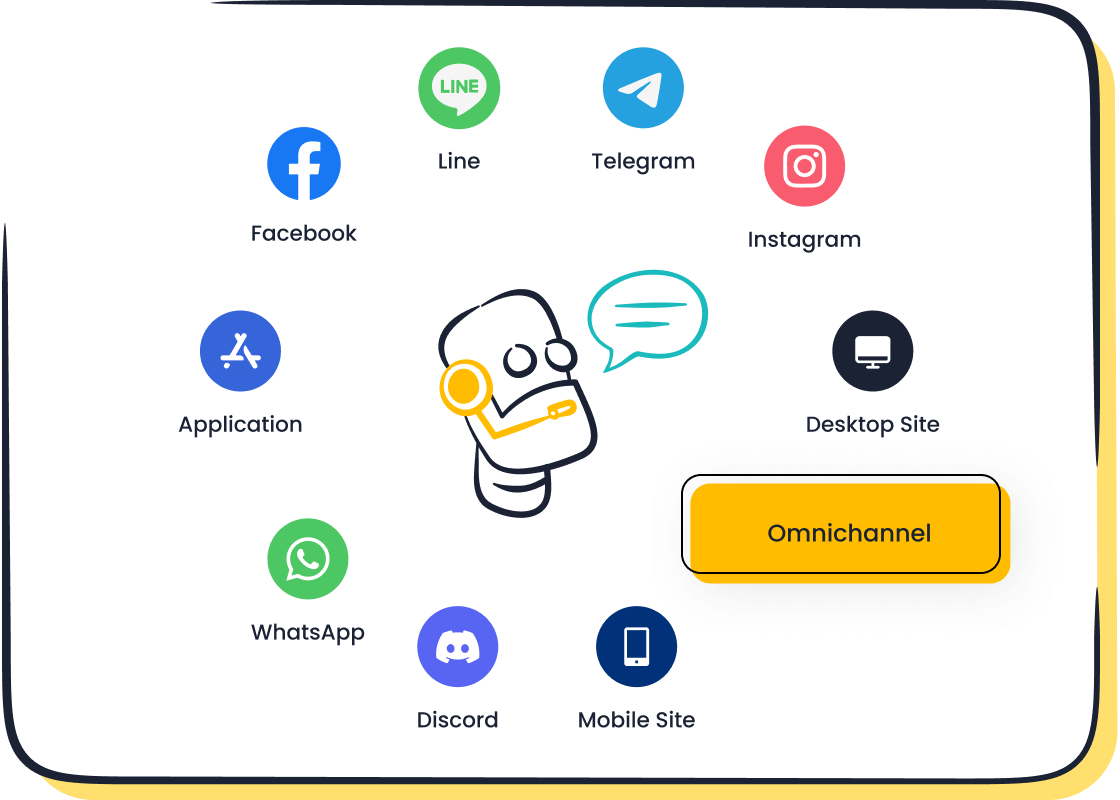
These figures highlight the transformative impact of automation on scaling operations. Tools like Sobot’s AI Chatbot ensure your business can handle growing customer demands without adding unnecessary costs. The chatbot operates 24/7, managing high volumes of queries while maintaining quick response times. This capability allows you to scale your support efforts effortlessly, even during peak periods.
By automating customer support, you can future-proof your operations. Automation ensures your business remains agile and responsive, no matter how large your customer base becomes. It empowers you to deliver exceptional service consistently, building trust and loyalty among your customers.
Steps to Implement Smart Automation Tools

Identifying Pain Points in Customer Support
Before implementing automation tools, you need to identify the challenges in your customer support system. Common pain points include slow response times and limited availability on preferred channels. These issues frustrate customers and reduce trust in your brand. For example, delays in resolving inquiries often lead to dissatisfaction, while the absence of support on platforms like WhatsApp or SMS can make customers feel neglected.
Start by analyzing your current operations. Look at metrics such as average response time and resolution rates. Use customer feedback to pinpoint recurring complaints. Tools like Sobot’s omnichannel solution can help you gather data across multiple platforms, providing insights into customer behavior and preferences. Once you understand these pain points, you can prioritize areas for improvement and determine which tasks to automate.
| Pain Point | Description |
|---|---|
| Customer support responses take too long | Customers experience delays when seeking help, leading to frustration and potential loss of trust. |
| Support is unavailable on the expected channel | Customers cannot reach support through their preferred channels, making them feel neglected. |
Selecting the Right Tools, Including Sobot's Chatbot
Choosing the right automation tools is crucial for success. Look for solutions that align with your business needs and workflows. For example, Sobot’s AI Chatbot offers predictive intelligence, proactive problem-solving, and seamless CRM integration. These features ensure efficient handling of customer queries while providing personalized support.
When evaluating tools, consider their ability to integrate with your existing systems. Advanced natural language processing (NLP) capabilities are essential for understanding customer intent accurately. Continuous improvement features allow the chatbot to learn from interactions, enhancing its performance over time.
| Feature | Description |
|---|---|
| Predictive Intelligence | Uses deep learning algorithms for personalized recommendations |
| Proactive Problem-Solving | Anticipates issues based on customer data and behavior patterns |
| CRM Integration | Seamlessly connects with customer relationship management systems |
| Advanced NLP | Sophisticated natural language processing for nuanced understanding |
| Continuous Improvement | Learns and improves from each interaction |
| Data Analysis | Comprehensive customer data analysis for insights and optimization |
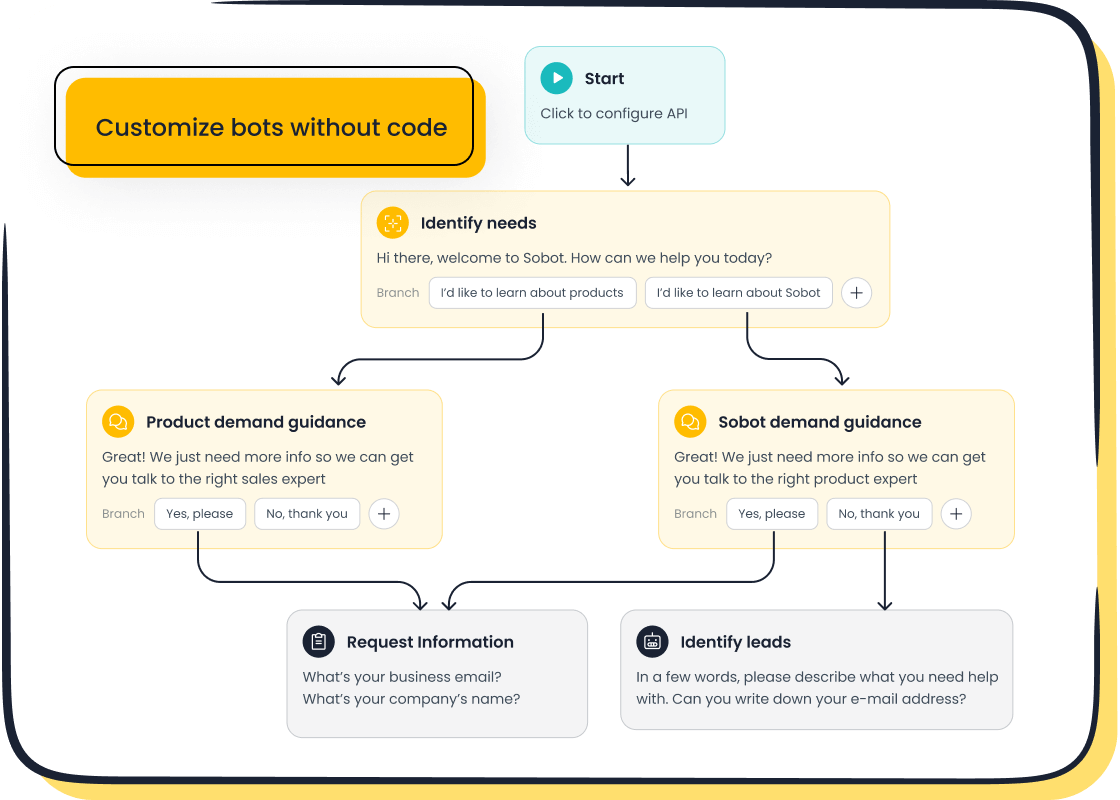
Sobot’s Chatbot stands out because it operates 24/7, supports multiple languages, and requires no coding for setup. These features make it an ideal choice for businesses looking to automate customer support effectively.
Setting Up AI Chatbots for Common Queries
Once you’ve selected the right tools, focus on setting up AI chatbots to handle frequent customer queries. Start by identifying repetitive tasks, such as answering FAQs or providing order updates. Automating these tasks frees your team to focus on complex issues, improving overall efficiency.
Deploying chatbots involves creating a knowledge base. Use articles, PDFs, and text snippets to build a repository of information the chatbot can access. Sobot’s AI Chatbot simplifies this process with its point-and-click interface, allowing you to design workflows without coding.
Monitor performance metrics like average response time and resolution rates to ensure the chatbot meets customer expectations. For example, tracking customer satisfaction scores and engagement levels helps you refine the chatbot’s functionality. Continuous optimization ensures the chatbot adapts to changing customer needs, delivering consistent and reliable support.
- Key Metrics to Track:
- Average response time
- Resolution rate
- Customer feedback scores
- Inquiry types handled by chatbots vs. human agents
By setting up AI chatbots strategically, you can automate customer support efficiently, enhancing both productivity and customer satisfaction.
Automating Workflows and Processes
Automating workflows and processes transforms customer support operations. It eliminates repetitive tasks, allowing your team to focus on high-value activities. By automating customer support workflows, you can achieve faster response times, improve customer satisfaction, and reduce operational costs.
Benefits of Workflow Automation
Here are the documented improvements businesses experience when automating workflows:
- Faster Response Times: Automation ensures quicker replies to customer inquiries, reducing wait times significantly.
- Improved Customer Satisfaction: Optimized workflows deliver consistent and reliable support across multiple channels.
- Increased Efficiency and Productivity: Automation reduces redundancies, enabling your team to concentrate on complex issues.
- Cost Savings: By minimizing manual tasks, automation lowers operational expenses and reduces the need for large support teams.
How to Automate Workflows Effectively
To automate workflows effectively, start by identifying repetitive tasks that consume time and resources. For example, answering FAQs or processing order updates are ideal candidates for automation. Tools like Sobot’s AI Chatbot simplify this process by offering a point-and-click interface for designing workflows without coding.
Next, integrate automation tools with your existing systems. This ensures seamless communication between platforms and provides a unified view of customer interactions. For instance, Sobot’s omnichannel solution consolidates data from various channels, enabling personalized and efficient support.
Finally, monitor the impact of automation on your operations. Track metrics like response times and resolution rates to measure improvements. Use customer feedback to refine workflows and ensure they align with expectations. Continuous optimization keeps your processes efficient and adaptable to changing needs.
Tip: Start small by automating one or two workflows. Gradually expand automation as you identify more opportunities for improvement.
Monitoring and Optimizing Automation Performance
Tracking the performance of automation tools is essential for ensuring their effectiveness. Regular monitoring helps you identify areas for improvement and optimize processes to meet customer expectations.
Key Metrics to Measure Automation Performance
Use the following methods to evaluate the success of your automation tools:
| Measurement Method | Description |
|---|---|
| First Response Time | Measures how quickly customers receive their initial replies, indicating customer satisfaction. |
| Customer Satisfaction Scores (CSAT) | Assesses customer ratings of their experience post-interaction with automated support. |
| Automation Accuracy | Evaluates the frequency of correct automation responses without human intervention. |
| Customer Feedback Analysis | Analyzes customer comments to identify strengths and weaknesses in automation. |
| Cost Efficiency Metrics | Compares costs before and after automation to assess financial benefits. |
Steps to Optimize Automation
- Analyze Performance Data: Review metrics like CSAT and automation accuracy to pinpoint areas needing improvement.
- Refine Knowledge Bases: Update the chatbot’s knowledge base regularly to ensure accurate and relevant responses.
- Incorporate Customer Feedback: Use feedback to identify gaps in automation and adjust workflows accordingly.
- Test and Iterate: Conduct regular tests to evaluate the effectiveness of automation tools. Make adjustments based on results.
Sobot’s AI Chatbot simplifies optimization with its reporting and analytics features. These tools provide insights into customer interactions, helping you refine workflows and enhance performance.
Note: Continuous monitoring ensures your automation tools stay aligned with customer needs and business goals.
Best Practices for Customer Support Automation
Keeping Humans in the Loop for Complex Issues
Automation excels at handling repetitive tasks, but some situations require a human touch. Complex inquiries often involve emotional intelligence or personalized solutions that AI cannot provide. For example, a customer disputing a billing error may need empathy and detailed explanations. Human agents are essential in these cases to ensure customer satisfaction.
AI tools like Sobot’s Chatbot can handle routine queries, freeing your team to focus on these high-value interactions. This collaboration improves efficiency while maintaining a personal connection. Research shows that 69% of consumers value personalized care, which directly impacts their loyalty. By combining automation with human expertise, you can create a balanced support system that meets diverse customer needs.
Tip: Train your team to handle complex issues effectively. Aim for first-contact resolution to minimize back-and-forth interactions and enhance customer trust.
Prioritizing Customer Self-Service Options
Customers increasingly prefer solving problems on their own. Studies reveal that 81% of customers attempt self-service before contacting support. Providing robust self-service options not only meets this demand but also reduces the workload on your team.
Self-service tools like knowledge bases, FAQs, and AI-driven chatbots empower customers to find answers quickly. For instance, Sobot’s AI Chatbot operates 24/7, offering instant solutions across multiple channels. This accessibility improves customer satisfaction and saves time.
| Statistic | Description |
|---|---|
| 67% | Customers prefer self-service over speaking to an agent. |
| 95% | Businesses report an increase in self-service requests. |
| $1-3 million | Average annual savings for companies implementing self-service. |
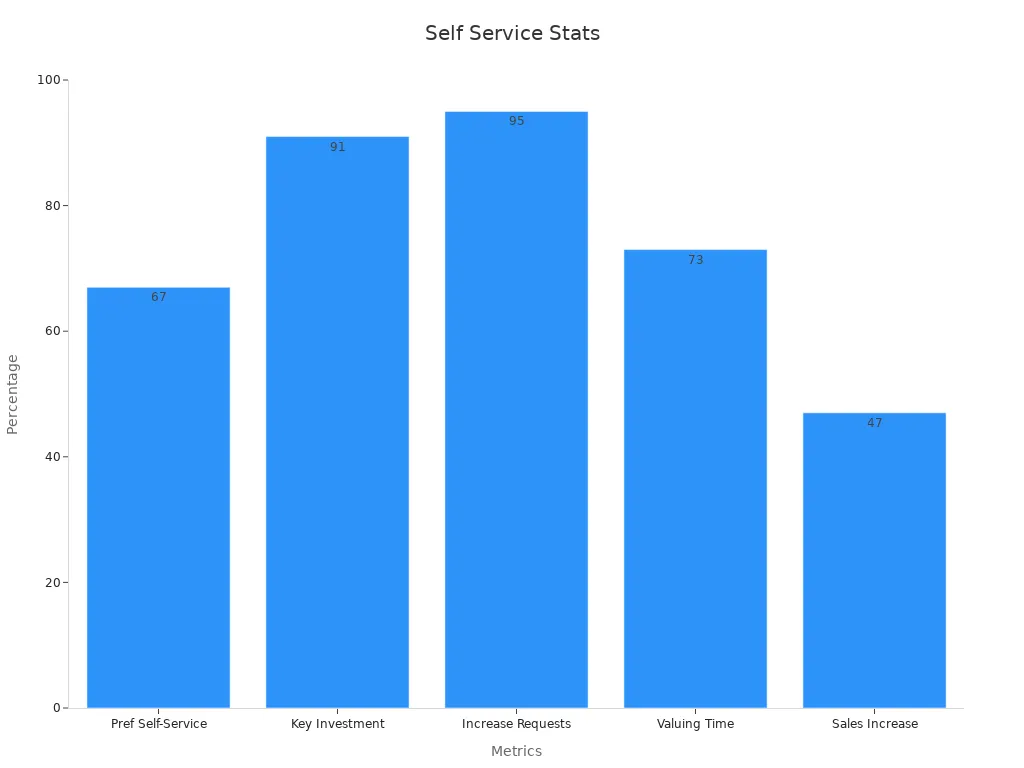
By prioritizing self-service, you can automate customer support effectively while enhancing the overall experience.
Automating High-Impact Tasks
Focusing on high-impact tasks ensures maximum efficiency. Automation can handle large volumes of requests simultaneously, improving response times and reducing agent workloads. For example, companies using AI solutions report a 56% reduction in average handle time and an 85% self-service resolution rate.
Sobot’s AI Chatbot is an excellent tool for automating high-impact tasks. It triages queries, provides real-time assistance, and integrates seamlessly with CRM systems. These features allow your team to focus on strategic goals while maintaining consistent service quality.
| Metric | Improvement |
|---|---|
| Self-service resolution rate | 85% of customers resolved issues without agent help |
| Average handle time reduction | Dropped by 56% |
By automating these tasks, you can streamline operations, improve customer satisfaction, and scale your support efforts effortlessly.
Regularly Updating and Optimizing Tools
Automation tools require regular updates to stay effective. Customer needs evolve, and outdated systems may fail to meet expectations. By optimizing your tools, you ensure they deliver accurate and efficient support.
Start by gathering feedback from customers. Post-interaction surveys can provide valuable insights into satisfaction levels, response times, and issue resolution. Use this data to identify areas where your automation tools need improvement. For example:
- Analyze feedback to optimize workflows and improve tool performance.
- Monitor trends in customer feedback to adjust service capacity or routing.
Continuous monitoring helps you stay ahead of potential issues. Regular updates to your chatbot’s knowledge base ensure it provides relevant and accurate responses. Tools like Sobot’s AI Chatbot make this process simple with features that allow easy updates without coding.
Tip: Schedule periodic reviews of your automation tools. This practice ensures they align with your business goals and customer expectations.
By keeping your tools updated, you maintain high service standards and build trust with your customers.
Maintaining a Personal Touch in Interactions
Automation excels at handling repetitive tasks, but customers still value human interactions. For complex issues, personal connections foster trust and loyalty. Customers often prefer speaking to a human when they face unique or emotional challenges.
Human agents bring empathy and problem-solving skills that AI cannot replicate. They provide emotional support and personalized solutions, which enhance the overall experience. Research shows that maintaining a personal touch in customer service strengthens relationships and boosts loyalty.
- Customers appreciate the trust and connection that come with human interactions.
- Personal service creates a sense of care and understanding, which AI alone cannot achieve.
To balance automation with human interaction, use tools like Sobot’s omnichannel solution. It seamlessly transfers complex queries to human agents while ensuring routine tasks are automated. This approach allows your team to focus on building meaningful connections with customers.
Note: Train your agents to handle complex issues effectively. Their ability to resolve problems with care and precision will leave a lasting impression on your customers.
By combining automation with a personal touch, you create a support system that meets both practical and emotional needs.
Overcoming Challenges in Automation
Addressing Customer Frustration with Bots
Automated systems can sometimes leave customers feeling frustrated. Common issues include robotic responses, irrelevant answers, or endless loops that fail to resolve problems. These experiences often stem from a lack of empathy or limited understanding of nuanced queries. For example, bots may struggle with informal language or complex questions, leading to misinterpretations.

To address these challenges, you can implement AI-powered tools that enhance customer interactions. Features like sentiment analysis allow bots to detect emotions and respond with empathy, making conversations feel more human. Context-aware systems also improve engagement by remembering past interactions and personalizing responses. For instance, a telecom company using AI resolved 70% of customer inquiries, significantly reducing wait times and improving satisfaction. Tools like Sobot’s AI Chatbot offer 24/7 availability and proactive support, ensuring customers receive timely and relevant assistance.
Tip: Regularly update your chatbot’s knowledge base to improve accuracy and reduce customer frustration.
Ensuring Data Privacy and Security
When you automate customer support, protecting customer data becomes a top priority. Automated systems handle sensitive information, making robust security measures essential. Without proper safeguards, data breaches can damage trust and harm your brand reputation.
You can ensure data security by implementing proven measures, such as:
| Security Measure | Description |
|---|---|
| Data Encryption | Converts data into a coded format, ensuring it remains unreadable if intercepted. |
| Access Control Mechanisms | Restricts access to sensitive data, ensuring only authorized users can view or edit it. |
| Regular Security Audits | Identifies and mitigates vulnerabilities, ensuring unauthorized access is quickly detected. |
| Data Masking and Anonymization | Replaces sensitive information with fictional data or removes personally identifiable information entirely. |
Sobot’s solutions prioritize security with features like data encryption and access control, ensuring your customers’ information remains safe. By adopting these measures, you can build trust and maintain compliance with data protection regulations.
Avoiding Over-Automation Pitfalls
Over-automation can lead to unintended consequences. For example, relying too heavily on bots may result in robotic responses or missed opportunities for upselling. Technical glitches can also disrupt service, leaving customers dissatisfied. A financial services company once reported a 25% drop in satisfaction due to poorly implemented automation.
To avoid these pitfalls, balance automation with human involvement. Use bots for repetitive tasks but ensure complex issues are escalated to human agents. Sobot’s omnichannel solution seamlessly transfers such cases to agents, maintaining a personal touch. Regularly monitor automation performance to identify and resolve issues before they escalate.
Note: Start small when automating processes. Gradually expand as you identify areas where automation adds the most value.
Training Teams to Work Alongside Automation Tools
Introducing automation tools into your customer support system requires more than just technology. Your team plays a critical role in ensuring these tools work effectively. Proper training equips your staff to collaborate with automation, maximizing its potential while maintaining a high level of service.
Steps to Train Your Team
-
Educate on Automation Benefits
Begin by explaining how automation improves efficiency and reduces repetitive tasks. Help your team understand that tools like Sobot’s AI Chatbot are designed to assist, not replace, their roles. Highlight how automation allows them to focus on complex and rewarding tasks. -
Provide Hands-On Training
Use real-world scenarios to demonstrate how automation tools function. For example, show how the chatbot handles FAQs or triages queries. Let your team practice using these tools in a controlled environment to build confidence. -
Teach Escalation Protocols
Train your team to identify when to step in. Automation handles routine queries, but complex issues often require human intervention. Clear escalation protocols ensure seamless transitions between bots and agents. -
Encourage Feedback and Collaboration
Create a feedback loop where your team can share insights about the tools. Their input helps refine workflows and improves the overall system. Collaboration fosters a sense of ownership and boosts morale.
Tip: Regularly update training sessions to keep your team aligned with new features or updates in automation tools.
Why Training Matters
Well-trained teams work harmoniously with automation, ensuring smooth operations. They feel empowered, not threatened, by the technology. This balance enhances productivity and creates a better experience for your customers. By investing in training, you set your team up for success in an automated environment.
Automating customer support transforms how you interact with customers. Tools like Sobot's Chatbot improve efficiency, reduce costs, and enhance satisfaction. While automation handles routine tasks, human agents ensure complex issues receive personal care. This balance creates a seamless experience for your customers.
Take the first step by identifying areas where automation can make the biggest impact. Choose tools that align with your goals and start small. Gradually expand automation as you see results. By acting now, you can future-proof your customer support and deliver exceptional service every time.
FAQ
What is the main purpose of customer support automation tools?
Automation tools streamline repetitive tasks, like answering FAQs or processing orders. They improve efficiency, reduce costs, and enhance customer satisfaction. Tools like Sobot’s Chatbot operate 24/7, ensuring quick responses and freeing your team to focus on complex issues.
How can automation improve customer satisfaction?
Automation provides fast and accurate responses, reducing wait times. It ensures consistent service quality across channels. Tools like Sobot’s omnichannel solution personalize interactions, making customers feel valued and improving satisfaction scores.
Do automation tools require coding knowledge to set up?
No, many automation tools, including Sobot’s AI Chatbot, feature user-friendly interfaces. You can design workflows with point-and-click functionality, making setup easy for anyone, even without technical expertise.
Can automation handle multilingual customer queries?
Yes, tools like Sobot’s Chatbot support multiple languages. They allow customers to interact in their preferred language, ensuring clear communication and better service experiences.
How do I measure the success of automation tools?
Track metrics like response times, resolution rates, and customer satisfaction scores. Use feedback to refine workflows. Tools like Sobot’s Chatbot provide analytics to help you monitor performance and optimize processes.
See Also
Enhance SaaS Customer Support Using Live Chat Techniques
Perfecting Live Chat Techniques for Effective Customer Support
Increasing Efficiency Through AI-Driven Customer Service Solutions
